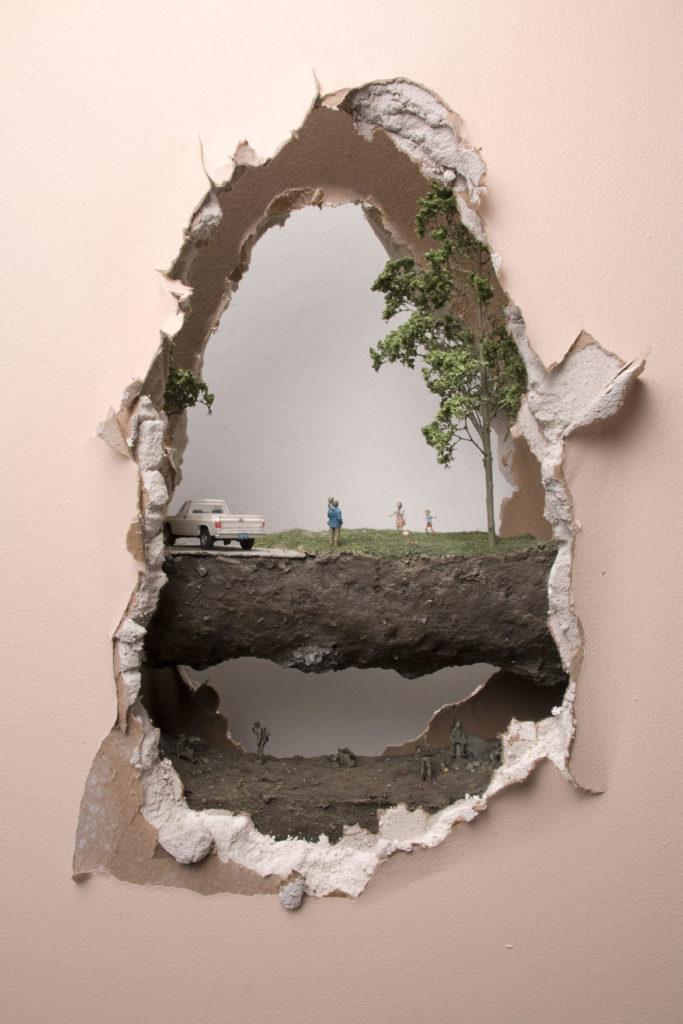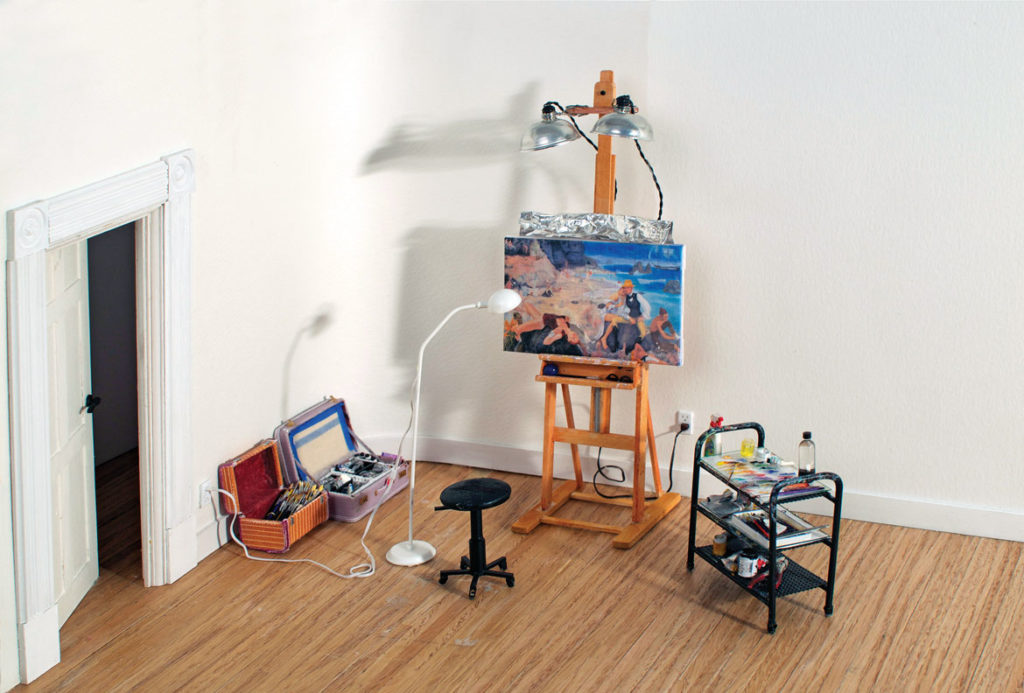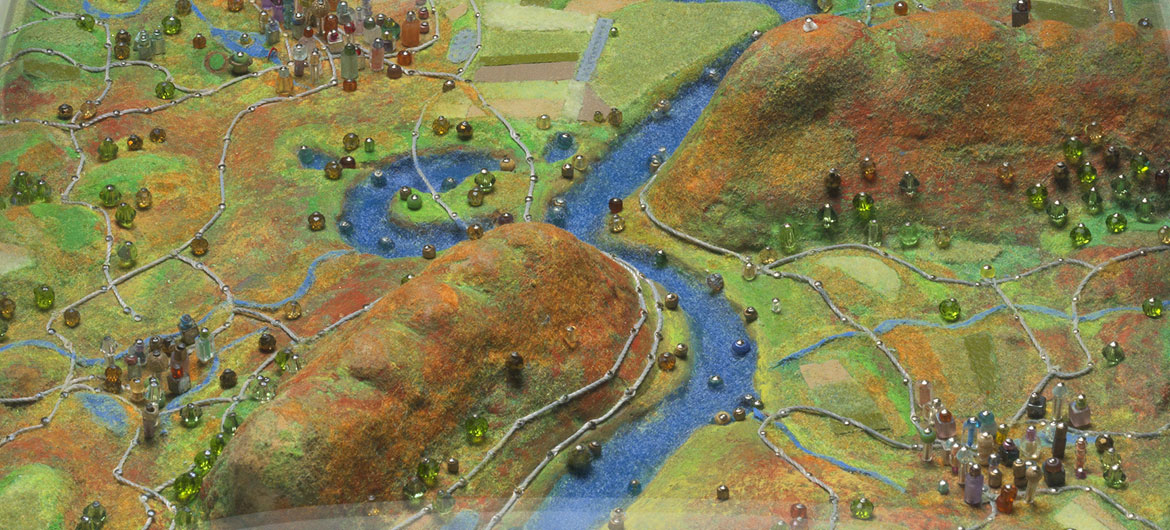In “Small Worlds: Miniatures in Contemporary Art”—at the University of Vermont’s Fleming Museum of Art in Burlington from Feb. 13 to May 10, 2019—artists adopt the techniques of dioramas, model train figures and architectural models to invent tiny worlds that reflect our dreams and fears.
“Miniatures, reminiscent of our childhood playthings, can recall in us that sense of wonder for the world around us, but can also suggest dark forces hidden beneath the seduction of the small,” the opening sign says. “As our inherent attraction to the miniature pulls us into the imagined world of the artist, real-world traumas such as violence, displacement, and environmental disaster are brought to our attention in intricate and intimate ways.”
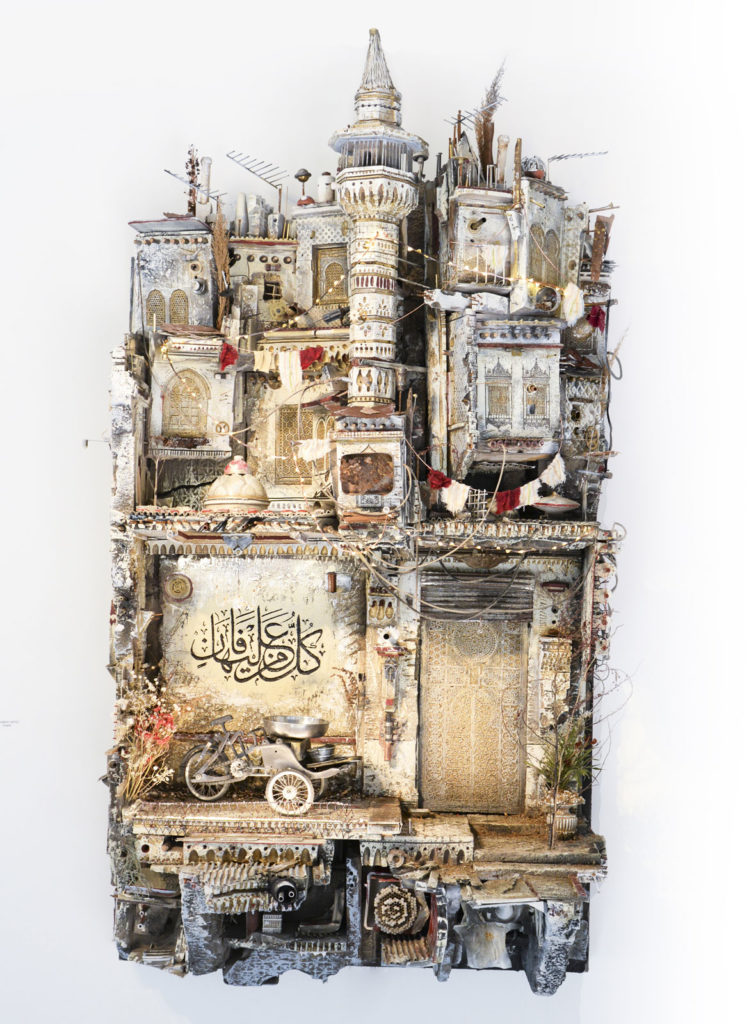
Syrian-born, Connecticut-based sculptor Mohamad Hafez described himself to me in 2017 as “an artist witnessing the death of his country.”
“I don’t think people ever anticipated this amount of viciousness and devastation,” he told me. “It caught us completely by surprise. I don’t think I picked up a single pencil in the first year of the conflict. I was so much in awe and traumatized. It wasn’t until two years into the war [that he made art again], I was so filled up and exploded.”
Hafez turns cast plaster, paint, parts of old radios and fans, rusty drill bits and nails into heartwrenching models of abandoned cities smashed to ruins.
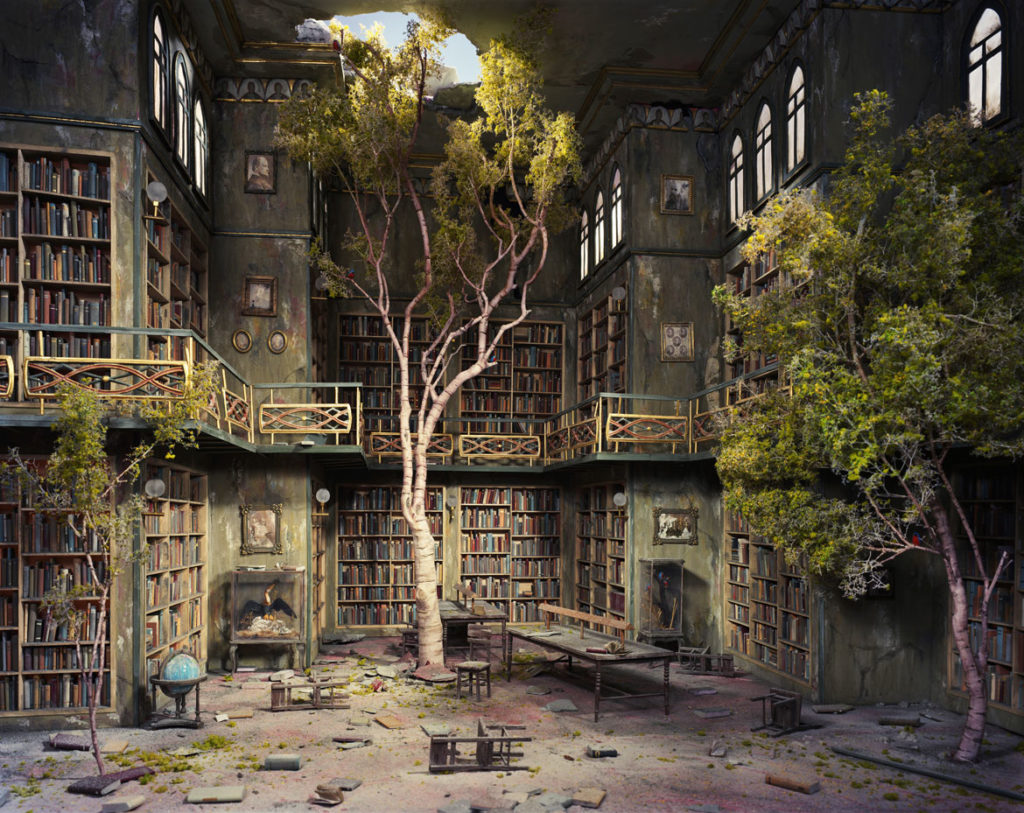
Lori Nix + Kathleen Gerber create photographs of models of abandoned subways and bars and libraries overgrown by nature. Allison May Kiphuth cuts out her watercolor paintings to create environmental dioramas. Thomas Doyle fashions miniature people and homes beset by strange end-of-the-world floods and train crashes and earthquakes.
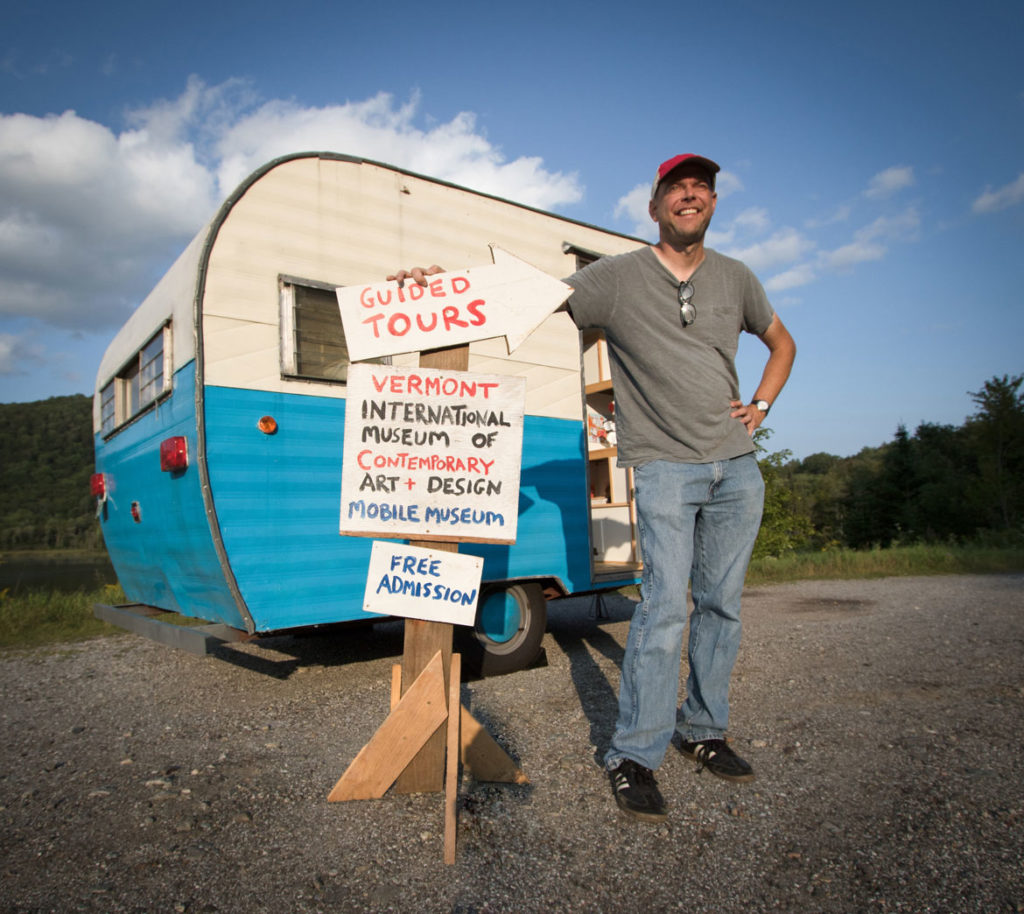
The exhibition also features Brian D. Collier’s “The Traveling Museum of Very Small Objects” and Matt Neckers’s “Vermont International Museum of Contemporary Art + Design (VTIMoCA+D),” which offers galleries of miniature artworks showcased inside old suitcases and a refrigerator.
Corin Hewitt has constructed a miniature version of his family’s cabin in East Corinth, Vermont. Joe Fig creates models of the studios of esteemed artists. Minimiam (Akiko Ida + Pierre Javelle) create funny scenes by setting miniature people in worlds made from actual fruit, pastries and ice cream.
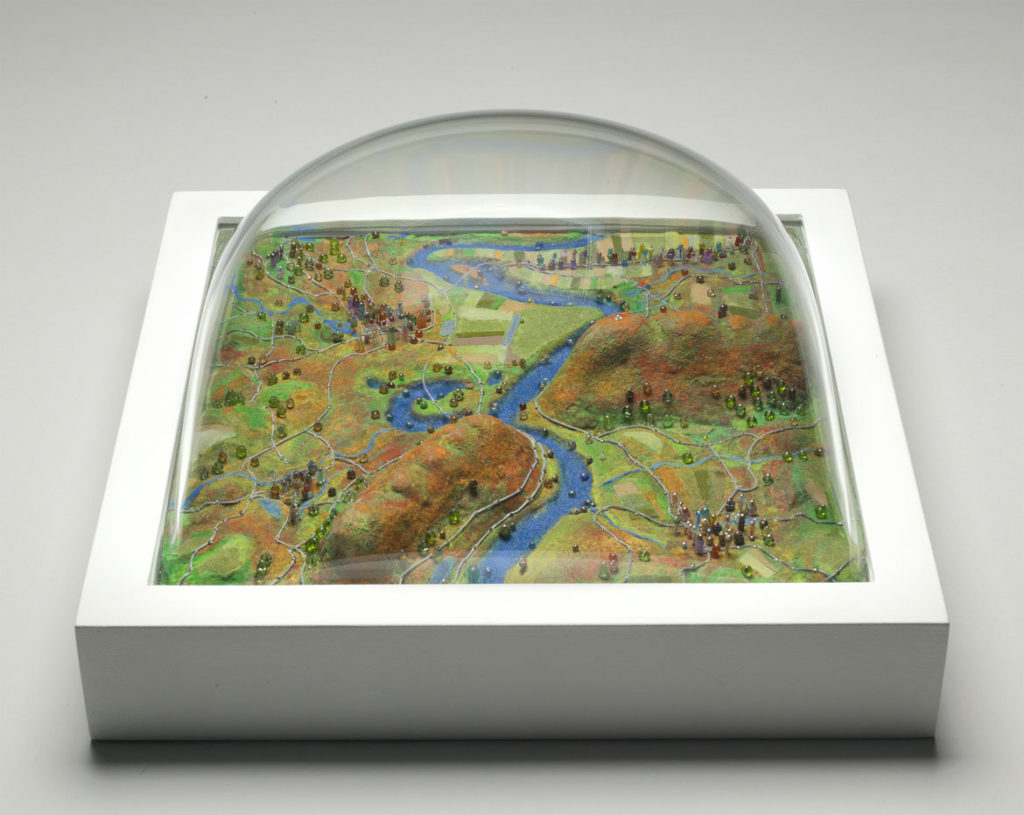
The blue Connecticut River winds through the patchwork green and autumn orange of tiny fields and the Holyoke Range of central Massachusetts in Sally Curcio’s “Happy Valley (Fall)” from 2016.
“When I was a child I used to play on swings and look at blocks and imagine I was miles above the ground,” the Northampton artist told me in 2013.
Her “Bubbles” are miniature worlds, a foot square, sealed under clear plastic domes in which foam and flocking bejeweled with beads become glittering trees and delicate futuristic towers. She has created a futuristic “Orbit City,” dream versions of New York and Miami Beach, a pair of desert islands, Sherwood Forest, the North Pole, Atlantis.
“This is perfection in here,” Curcio told me. But “it has that fragility to it. It could be popped.”
If this is the kind of coverage of arts, cultures and activisms you appreciate, please support Wonderland by contributing to Wonderland on Patreon. And sign up for our free, weekly newsletter so that you don’t miss any of our reporting.
